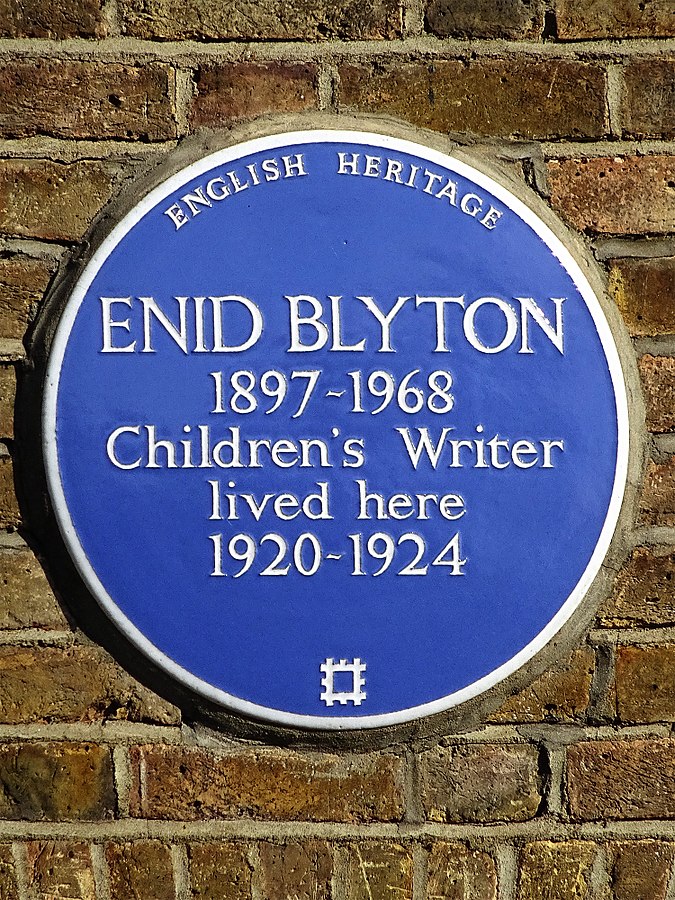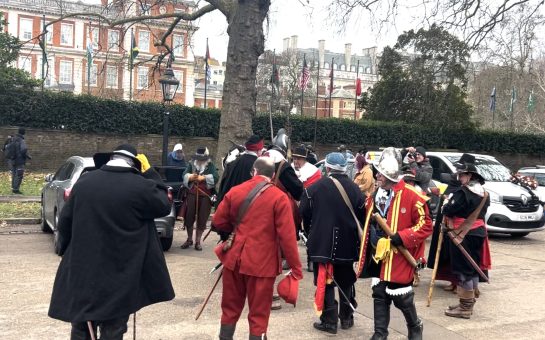Enid Blyton’s legacy came under fire last week as the website linked to her blue plaque in Kingston was updated to acknowledge allegations of racism, xenophobia and lack of literary merit in her work.
English Heritage runs London’s blue plaques scheme consisting of over 900 commemorative plaques celebrating the link between prominent figures and buildings which shaped them, either where they lived and worked.
Blyton’s blue plaque was installed 1997 on Hook Road, Chessington and reads “ENID BLYTON 1897-1968 Children’s Writer lived here 1920-1924”.

The organization updated their web page attached to Blyton’s plaque to include a section entitled “Racism in Blyton’s Work” in July 2020.
While it says she is a well-loved children’s author particularly known for her series The Famous Five and The Secret Seven, it now details criticism during her lifetime and after for specific works like The Little Black Doll and The Mystery That Never Was.
It also acknowledges how Blyton was rejected by the Royal Mint in 2016 for commemoration on a new 50p coin on account of her alleged racism, xenophobia, sexism, homophobia and lack of literary merit.
The amended entry divided many people with some saying on social media that their childhood was being cancelled by woke warriors in a culture war.
A debate “Is it fair for Enid Blyton to be cancelled?” was aired on newly-launched GB News and Dan Wooton wrote a column on the subject with #EnidBlyton trending on Twitter on Wednesday.
In a poll by South West Londoner, the majority thought that the prolific author was a product of her time rather than a racist kids’ writer or innocent beloved author.
One mother-of-two told South West Londoner: “English Heritage should have better things to do. The books are of their time and reading them did not produce racists!”
Another mother-of-two and previous children’s book editor pointed out that the claims of racism and even lack of literary merit and sexism in Blyton’s work are not new and there has always been a snobbery from the publishing establishment around her books.
They added: “As much as we may not like it and how simply the books are written, they are still hugely popular and get kids into reading.
“For a lot of people Enid Blyton will be the first series of books they enjoyed in childhood but she did have views that were questionable even at the time.
“Her books like Little Black Doll and Noddy which are undeniably problematic are no longer being published, at least not in their original form.”
English Heritage have also added sections to websites linked to other notable plaques, for example “Imperalism and War” for the Rudyard Kipling entry.
His plaque was erected in 1957 in Westminster and reads “RUDYARD KIPLING 1865-1936 poet and story writer lived here 1889-1891”.
His web page on English Heritage now includes the statement: “Today, Kipling’s political views, expressed through his then popular writings, have been widely criticised for their racist and imperialist sentiments.”
A similar uproar happened last year when Roald Dahl’s family quietly put up an apology for his anti-semitic views on the foundation’s website.
Other re-evaluations of prominent figures’ views and work have been taking place up and down the country from Edward Colston statue being teared down for not acknowledging his history of trafficking slaves in Bristol, Winston Churchill statue being graffitied in Westminster in a Black Lives Matter Protest for his xenophobic views, the debate around the Cecil Rhodes commemorative statue being removed at Oxford University and JK Rowling receiving backlash for allegedly transphobic Tweets.
In a statement English Heritage said: “Last year, English Heritage started an on-going programme of updating the online entry for each blue plaque recipient.
“Blue plaque recipients with updated entries include actor and playwright Noël Coward and the social reformer Annie Besant.
“Our website entries aim to provide a fuller picture of each person’s life, including aspects that people may find troubling.”
English Heritage Curatorial Director Anna Eavis said: “We have no plans whatsoever to remove any of our London blue plaques.
“On our website, we are providing more information for each blue plaque so that people can find out more about the person behind the plaque.”
Photo credits: Picasa on Flickr via Wikimedia Commons




